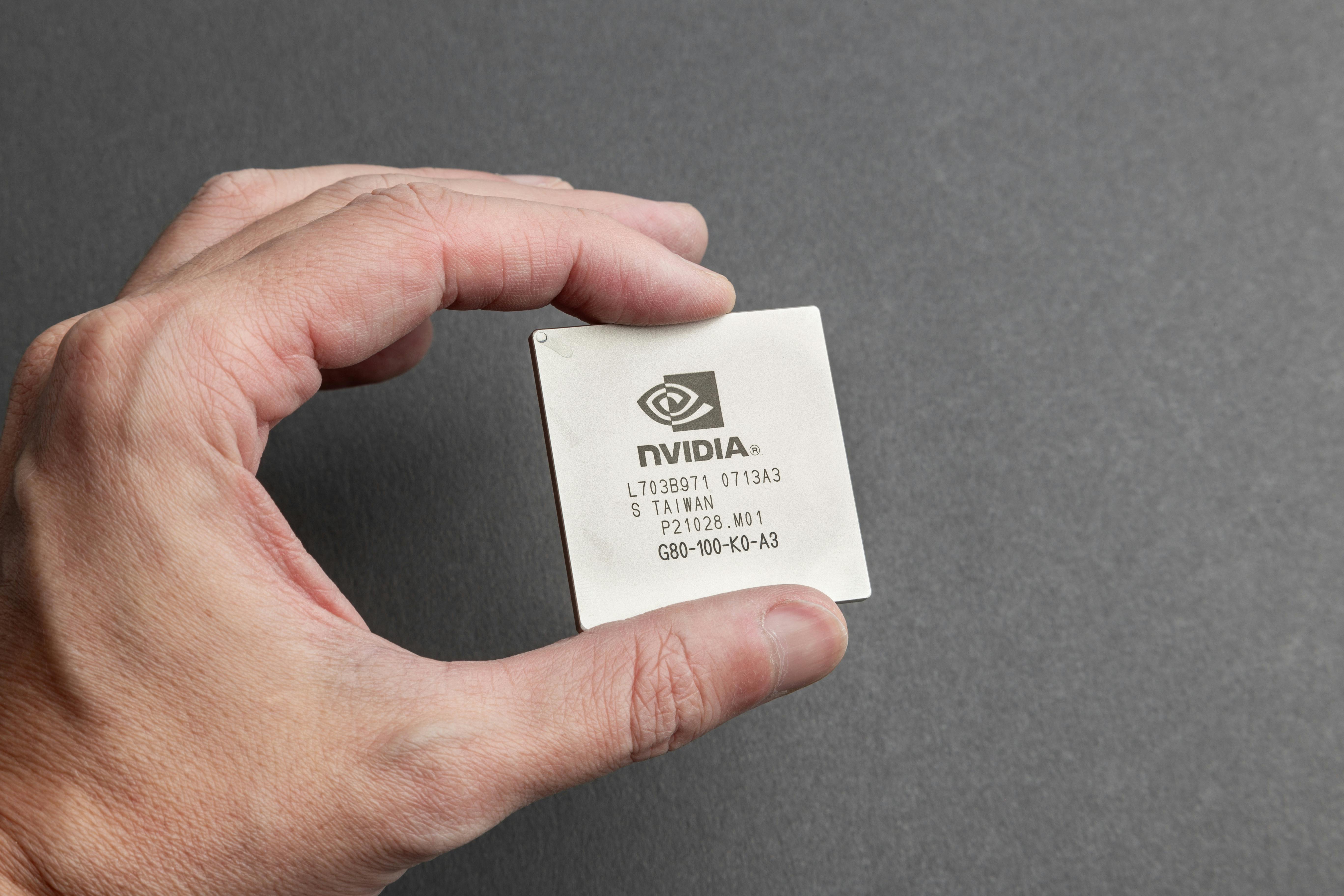Are you experiencing sluggish performance on your PC while gaming or running demanding applications? If so, a VRAM leak in Windows 11 could be the culprit! This article will guide you through the steps to troubleshoot VRAM leaks and unlock your system’s full potential. Understanding how to identify and fix these leaks is essential for gamers and professionals alike, ensuring that your graphics card operates at peak performance.
Many users are unaware that a VRAM leak can lead to significant slowdowns and crashes, leaving your computer underperforming. By addressing this issue, you not only enhance your gaming experience but also boost productivity in graphics-intensive tasks. Are you ready to discover the secrets to maintaining optimal performance on Windows 11? We’ll delve deep into common causes of VRAM leaks, effective troubleshooting methods, and tips to prevent future occurrences.
In this article, you’ll learn how to monitor your VRAM usage, identify problematic applications, and implement solutions that will keep your system running smoothly. With the right knowledge and tools, you can combat this frustrating issue and ensure your graphics card is utilized effectively. Don’t let a VRAM leak hold you back—read on to troubleshoot Windows 11 VRAM leak issues and unleash your PC’s true capabilities! Whether you’re a casual user or a hardcore gamer, mastering this aspect of your system can elevate your experience to new heights.
Top 7 Proven Strategies to Identify and Fix VRAM Leaks in Windows 11 for Optimal Gaming Performance

In the world of gaming, few things are more frustrating than experiencing a VRAM leak on Windows 11. This issue can dramatically impact your system’s performance, leading to lag, stuttering, and potential crashes. If you’re looking to troubleshoot Windows 11 VRAM leaks and unlock your PC’s full potential, you’re in the right place. We’ve gathered the top 7 proven strategies to identify and fix VRAM leaks, ensuring your gaming experience is seamless and enjoyable.
1. Monitor VRAM Usage
First things first, keeping an eye on your VRAM usage is crucial. Tools like MSI Afterburner or GPU-Z can help you track how much VRAM each application is using. If you see numbers climbing unexpectedly, you might be dealing with a leak.
2. Task Manager for Quick Checks
Another easy way to spot VRAM leaks is using the built-in Task Manager. You can press Ctrl + Shift + Esc to launch it and navigate to the “Performance” tab. Under “GPU,” you will find VRAM usage metrics. If you notice excessive usage, it could be a sign of trouble.
3. Update Graphics Drivers
Outdated graphics drivers often causes a myriad of problems, including VRAM leaks. Visiting your GPU manufacturer’s website (like NVIDIA or AMD) and downloading the latest drivers can often resolve these issues. Always remember to uninstall the old drivers first for the best results.
4. Disable Unused Applications
Sometimes, background applications can hog VRAM without you even realizing. Close any unnecessary programs running in the background, especially those that are graphics-intensive. This can free up VRAM and improve overall performance.
5. Adjust Graphics Settings
If you’re facing VRAM leaks frequently, it might be time to lower your graphics settings in games. Reducing texture quality or disabling certain effects can significantly reduce VRAM consumption, allowing for smoother gameplay.
6. Use System File Checker
System File Checker is a built-in tool in Windows 11 that can detect and repair corrupted system files, which might be causing the leak. To run it, open Command Prompt as an administrator and type “sfc /scannow.” It’ll take some time, but it’s worth it if you suspect file corruption.
7. Consider Hardware Upgrade
If none of these methods seem to work, maybe your hardware is the issue. Upgrading your graphics card can provide more VRAM and improve your gaming experience. Make sure to research compatible options for your system.
Summary of Strategies
- Monitor VRAM Usage: Use tools like MSI Afterburner.
- Task Manager: Check GPU performance there.
- Update Drivers: Keep your graphics drivers current.
- Close Background Apps: Limit resource hogs.
- Adjust Graphics Settings: Lower settings in games.
- Run System File Checker: Repair corrupted files.
- Upgrade Hardware: Consider a new graphics card.
By implementing these strategies, you can troubleshoot Windows 11 VRAM leaks effectively. Not only does it help in enhancing your gaming performance, but it also ensures that your system runs optimally.
Remember, diagnosing a VRAM leak can sometimes feel like searching for a needle in a haystack, but with patience and these practical tips, you can unlock your PC’s full potential. Don’t let VRAM leaks hold you back from enjoying your favorite games!
Is Your Windows 11 PC Sluggish? Discover How to Diagnose and Resolve VRAM Leaks Today!

Is your Windows 11 PC feeling sluggish? You’re not alone. Many users have reported performance issues, and one of the culprits could be a VRAM leak. VRAM, or Video Random Access Memory, is crucial for handling graphics and video tasks. When it leaks, it can slow down your system significantly. This article will help you diagnose and resolve VRAM leaks, allowing you to unlock your PC’s full potential.
Understanding VRAM Leaks
A VRAM leak happens when applications use more VRAM than they should, but don’t release it when they’re done. This can lead to sluggish performance, especially during gaming or graphic-intensive tasks. You might notice your games stuttering, or your system freezing up.
Historically, VRAM leaks were mostly associated with older operating systems, but with the advancements in Windows 11, it’s a problem that still persist. It can be caused by poorly optimized software, outdated drivers, or even hardware issues.
Signs Your PC Has a VRAM Leak
Identifying a VRAM leak can be tricky. Here are some signs to look for:
- Increased Memory Usage: If your task manager shows unusually high VRAM usage.
- Lagging Applications: Programs may freeze or lag during use.
- Graphics Artifacts: You might see strange visual glitches in games or graphic applications.
- Performance Drops: Sudden drops in frame rates while gaming or using graphic design software.
If you experience these symptoms, it’s time to troubleshoot.
Diagnosing VRAM Leaks on Windows 11
Diagnosing a VRAM leak involves checking your system performance and settings. Here’s how to do it:
- Open Task Manager: Right-click the taskbar and select “Task Manager.”
- Check Performance Tab: Click on the “Performance” tab to view VRAM usage.
- Identify Problematic Applications: Look for any applications that are using excessive VRAM. You can right-click on them to end the task if needed.
How to Resolve VRAM Leaks
Once you’ve identified the issue, here’s how you can address it:
- Update Graphics Drivers: Outdated drivers can cause VRAM leaks. Go to your manufacturer’s website to download the latest versions.
- Close Unused Applications: Free up VRAM by closing programs that you aren’t using.
- Adjust Graphics Settings: Lowering the graphics settings in games or applications can help reduce VRAM usage.
- Check for Software Updates: Make sure all of your applications are up to date as developers often fix bugs related to memory leaks.
Additional Tips for Optimal Performance
To ensure your Windows 11 PC runs smoothly, consider these additional tips:
- Disable Background Applications: Limit the number of applications running in the background.
- Increase Virtual Memory: Adjust your virtual memory settings in System Properties to give your system more resources.
- Regularly Restart Your PC: A simple restart can clear out memory and improve performance.
If all else fails, consider seeking professional help or consulting with tech-savvy friends. They might be able to spot issues you’ve overlooked.
In summary, diagnosing and resolving VRAM leaks on your Windows 11 PC can significantly improve its performance. By keeping an eye on memory usage, updating drivers, and adjusting settings, you can unlock your system’s full potential. Don’t let sluggish performance hold you back; take these steps today and breathe new life into your computer.
Unlock the Power of Your Graphics Card: 5 Essential Tips to Prevent VRAM Leaks on Windows 11

In the world of gaming and graphic design, your graphics card plays a key role in performance. But if you’re noticing slowdowns or glitches on Windows 11, you might dealing with VRAM leaks. This issue can sap your system’s resources and hinder your experience. Luckily, there are ways to troubleshoot Windows 11 VRAM leaks and unlock your PC’s full potential. Here are five essential tips to help you keep your graphics card running smoothly.
Understand VRAM and its Importance
VRAM, or Video Random Access Memory, is crucial for storing textures and images that your graphics card needs to render. When your VRAM leaks, it means that the memory allocated for graphics tasks isn’t being freed after use, causing performance drops. This is especially problematic in resource-heavy applications like video games or graphic editing software. Recognizing the signs of VRAM leaks can help you take action before they become major problems.
Identify the Signs of a VRAM Leak
You might asking yourself how to know if you’re facing a VRAM leak. Here’s what to look for:
- Frequent frame drops during gaming
- Increased loading times for applications
- Stuttering or lagging in graphics-intensive tasks
- Unresponsive applications or random crashes
If you see these symptoms, it could indicate a VRAM leak on Windows 11.
Regularly Update Graphics Drivers
One of the most effective ways to troubleshoot Windows 11 VRAM leak is keeping your graphics drivers updated. Manufacturers like NVIDIA and AMD regularly release updates that fix bugs and improve performance. To check for updates:
- Open Device Manager.
- Expand the Display adapters section.
- Right-click on your graphics card and select “Update driver.”
- Follow the prompts to install any available updates.
Updating your drivers can resolve many issues related to VRAM leaks.
Optimize Graphics Settings
Sometimes, your VRAM might be overwhelmed by high graphics settings. Reducing the settings in your games or applications can help significantly. Here are some adjustments you can make:
- Lower resolution settings
- Turn off anti-aliasing
- Reduce texture quality
- Disable unnecessary visual effects
By tweaking these options, you can free up VRAM and reduce the chances of leaks.
Monitor VRAM Usage
Keeping an eye on how much VRAM your applications are using is essential. Windows 11 has built-in tools that can help you monitor this. You can use the Task Manager:
- Press Ctrl + Shift + Esc to open Task Manager.
- Click on the Performance tab.
- Select GPU to see VRAM usage.
This can help you identify which applications consume most VRAM, allowing you to manage resources better.
Restart Your PC Regularly
One of the simplest ways to prevent VRAM leaks is to restart your computer regularly. This clears the memory and can help reset any applications that are misbehaving. Additionally, closing unused applications can free up VRAM, which is especially useful when multitasking.
Conclusion
By following these five essential tips, you can effectively troubleshoot Windows 11 VRAM leaks and unlock the full potential of your graphics card. Keeping your drivers updated, adjusting graphics settings, monitoring usage, and regularly restarting your machine will go a long way in optimizing your system’s performance. Don’t let VRAM leaks hold you back from enjoying a seamless gaming or creative experience. Take control today!
Step-by-Step Guide: How to Monitor and Manage VRAM Usage on Windows 11 for Enhanced Graphics

In the world of gaming and high-performance computing, managing your VRAM (Video Random Access Memory) is crucial. Many Windows 11 users find themselves puzzled when their graphics performance takes a dive. Understanding how to monitor and manage VRAM usage can unlock your PC’s full potential. This step-by-step guide will help you troubleshoot Windows 11 VRAM leak and enhance your graphics experience like never before.
Understanding VRAM and Its Importance
VRAM is a type of memory specifically for handling graphics data. Unlike system RAM, which is used for general computing tasks, VRAM is optimized for tasks like rendering images and video. In gaming, higher VRAM means better performance and higher quality textures. So, if your VRAM is not managed properly, you might notice lag, stuttering, or even crashes during gameplay.
How to Check VRAM Usage on Windows 11
Monitoring VRAM usage is the first step in troubleshooting any issues. Here’s how you can easily check it:
- Open Task Manager: Right-click on the taskbar and select “Task Manager” or press Ctrl + Shift + Esc.
- Go to Performance Tab: Navigate to the “Performance” tab.
- Select GPU: On the left side, you will see your GPU listed. Click on it to see its dedicated VRAM usage.
- Monitor Usage: Under “GPU,” you can view your VRAM usage in real-time. This helps to identify if you’re nearing the limits of your VRAM capacity.
Managing VRAM Usage
Once you’ve checked your VRAM usage, it’s time to manage it effectively. Here are some strategies:
- Lower Graphics Settings: If you notice your VRAM is maxed out, consider lowering your game’s graphical settings. Reducing texture quality, shadow details, and anti-aliasing can free up VRAM.
- Close Background Applications: Applications running in the background consume VRAM. Make sure to close unnecessary programs while gaming or performing graphic-intensive tasks.
- Update Graphics Drivers: Keeping your graphics drivers updated ensures optimal performance and can help to fix potential VRAM leaks. Use the Device Manager or check the manufacturer’s website for updates.
Troubleshooting Windows 11 VRAM Leak
A VRAM leak happens when software fails to release memory it no longer needs, causing performance issues. Here’s how to troubleshoot:
- Check for Software Updates: Make sure all your applications, especially games, are updated to the latest version. Developers often fix memory leaks in new patches.
- Restart Your PC: A simple restart can sometimes clear up memory issues.
- Use Resource Monitor: Type “Resource Monitor” in the Windows search bar. Under the “Memory” tab, you can see how much VRAM is being used and which processes are consuming it.
- Reinstall Problematic Applications: If a particular application seems to have a VRAM leak, consider uninstalling and then reinstalling it. Sometimes, corrupted files might cause this issue.
Additional Tips for Enhanced Graphics
- Upgrade Your Graphics Card: If you’re frequently running into VRAM limitations, it might be time to invest in a new graphics card with more VRAM.
- Adjust Virtual Memory Settings: Increasing your virtual memory can also help in managing VRAM usage more effectively. Go to Control Panel > System > Advanced system settings > Performance settings > Advanced tab > Virtual memory.
By following these steps, you can effectively monitor and manage your VRAM usage on Windows 11. It’s crucial to keep an eye on your system performance and make adjustments as needed. This not only enhances your gaming experience but also ensures your PC runs smoothly during graphic-intensive tasks. So take control of your VRAM now and enjoy the full capabilities of your Windows 11 PC!
The Ultimate Troubleshooting Checklist: 9 Common Causes of VRAM Leaks in Windows 11 and How to Solve Them

Windows 11 users often face an array of challenges, and one of the most perplexing issues can be VRAM leaks. These leaks can slow down your system, causing lag and diminished performance, which is frustrating especially when you want to unlock your PC’s full potential. This article will provide you with The Ultimate Troubleshooting Checklist: 9 Common Causes of VRAM Leaks in Windows 11 and How to Solve Them.
1. Outdated Graphics Drivers
One of the primary causes of VRAM leaks is outdated graphics drivers. When drivers are not updated, they can cause instability in how VRAM is utilized.
- Always check for updates from your GPU manufacturer.
- Use Device Manager to find and install the latest drivers.
2. Background Apps Using VRAM
Countless applications running in the background can munch up your VRAM. Some apps may not even be in use but still consume resources.
- Press Ctrl + Shift + Esc to bring up Task Manager.
- End tasks that are unnecessary or suspicious.
3. High-Resolution Settings
Using overly high resolutions or graphic settings in games or applications can lead to excessive VRAM usage. This is especially true for graphic-intensive applications.
- Lower the resolution in-game settings.
- Reduce texture quality and other graphics options.
4. Malware or Adware
Malicious software can hijack system resources, leading to VRAM leaks. Regularly scanning your system can help identify and eliminate these threats.
- Use Windows Defender or a reputable third-party antivirus software.
- Schedule regular scans to maintain your system’s health.
5. Memory Leaks in Software
Certain applications can have memory leaks, which means they don’t release VRAM back to the system when they are done using it. This is often the case with poorly optimized software.
- Monitor specific apps for excessive VRAM usage.
- Report bugs to software developers to encourage fixes.
6. Virtual Reality Applications
VR applications can be particularly demanding, often leading to higher VRAM usage. Ensure your system can handle these applications before running them.
- Check the system requirements for VR software.
- Close unnecessary applications while using VR to free up resources.
7. Windows 11 Updates
Sometimes, Windows updates can introduce bugs or issues that lead to VRAM leaks. Regularly check for updates and consider rolling back if issues arise post-update.
- Go to Settings > Update & Security to manage updates.
- Look for feedback on forums regarding specific updates.
8. Insufficient System RAM
If your system RAM is low, it can cause the GPU to use more VRAM than necessary. This can slow down performance drastically.
- Upgrade your RAM if possible.
- Consider closing unnecessary applications to free up resources.
9. Faulty Hardware
Lastly, faulty hardware can lead to VRAM leaks. If your graphics card is failing or there’s an issue with your motherboard, it can cause performance problems.
- Test your graphics card in another system to see if the issue persists.
- Seek professional help if you suspect hardware issues.
By addressing these common causes of VRAM leaks, you can effectively troubleshoot Windows 11 VRAM leak issues. Regular maintenance, system checks, and keeping your software updated can make a significant difference. Don’t let VRAM leaks hold you back from enjoying a smooth experience with your PC. With the right steps, you can unlock your computer’s full potential and enhance your overall digital experience.
Conclusion
In conclusion, addressing VRAM leaks in Windows 11 is essential for maintaining optimal system performance, particularly for gamers and content creators who rely heavily on graphical resources. Throughout this article, we’ve explored the common causes of VRAM leaks, including outdated drivers, background applications, and system misconfigurations. We discussed effective troubleshooting methods such as updating your graphics drivers, monitoring resource usage with Task Manager, and adjusting settings in resource-intensive applications. Additionally, ensuring that your Windows 11 installation is up to date can help mitigate these issues. If you continue to experience VRAM-related problems, consider reaching out to technical support or engaging with community forums for tailored advice. By taking these proactive steps, you can enhance your system’s performance and enjoy a smoother, more responsive computing experience. Don’t let VRAM leaks hinder your productivity or gaming—take action today and optimize your Windows 11 setup for the best performance possible.

